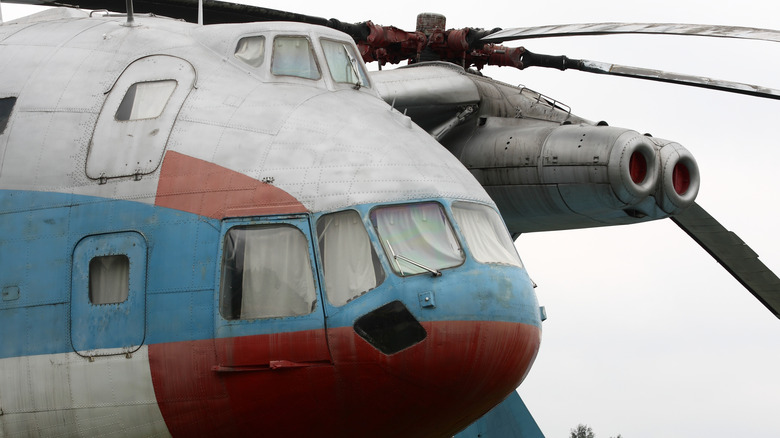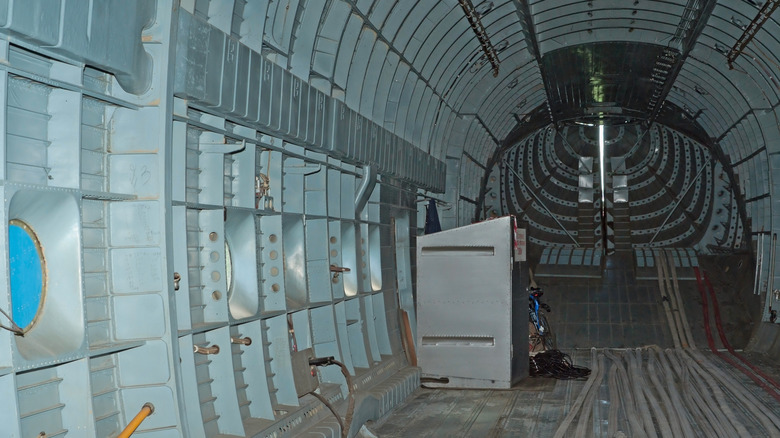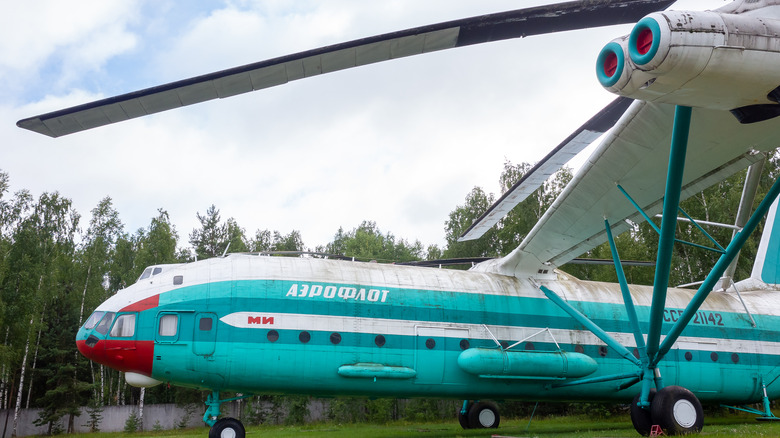The Largest Helicopter Ever Been Built: The History Of The Soviet Mil V-12
Russia and its former Soviet Union have never been afraid to supersize military hardware. Naturally, the balance between intimidatingly powerful and largely impractical can be difficult to master. The enormous Object 279 tank is a rather ill-thought-out testament to that.
Up in the air, the history of flying machines has seen some true behemoths. From small, single-pilot aircraft to the roomiest of cargo planes, our skies are full of planes of all shapes and sizes. Planes are, of course, typically rather larger than helicopters, but they absolutely aren't to be underestimated in terms of the awe factor. And when it comes to size, the Mil V-12 helicopter is nearly unrivaled.
Here's the story of this gargantuan helicopter, how it came to be created and what became of it. Though it didn't come to be known as an icon of the rotor-blade world, it absolutely commands respect from all who behold it.
The birth of the Mil V-12
Typically speaking now, stealth aircraft are created with subtlety in mind. At a time when global surveillance has advanced to a ludicrous degree, everybody from the average Internet user to global governments wants to keep their secret operations ... well, just that. The Soviet Union took a unique approach to this concept: creating an absurdly vast helicopter that could carry up to 105 tons.
The awe-inspiring tale of the Mil V-12 begins with a Mi V-6. This helicopter, according to E. Gordon et al in "Mil's Heavylift Helicopters," was created by OKB-329. The development department had been tasked with creating a hardy cargo helicopter for transporting military equipment, a matter of particular importance given the vastness and difficult terrain of the Soviet Union. The Mi-6, as the production model came to be known, held out until 1980, and its dual Soloviev D-25V engines allowed it to carry astonishing loads for its time: approximately 8 tons of sling cargo.
The world hadn't seen anything yet, however. The Mi-6 was followed by the Mil Mi-10, an adapted model that could cruise at 220 KPH at a weight of almost 96,000 pounds (with its average cargo). The next model the team created was the V-12, which first took experimental flight in the late 1960s. It would ultimately remain a prototype, but used or not, it's still the biggest helicopter ever made.
Just how big was the V-12?
Guinness World Records declares the V-12 to be the world's largest helicopter, and to have been such since its enormous 321,485 pound frame (when fully laden) embarked on a prototype flight in the summer of 1968.
Six people were required to crew it, and its cargo bay was almost 100 feet across. Its objective was to transport big weapons and other pieces of equipment without potential opponents seeing what was in the arsenal. At the height of the Cold War tensions, the V-12 perhaps wasn't so outlandish in terms of its appeal. However, as the Soviet Union moved to prefer a smaller (though still formidable) fleet of machines, this gargantuan helicopter, with its quartet of Soloviev D-25VF engines, never officially entered the fleet.
Its purpose is now served by the Mi-26, which was introduced in the late 1970s and struck a successful balance between a vast cargo-carrying ability (20 tons) and being impractically large. It's comparable in size to the Mi-6. None of this takes away, though, from the monstrous size of the V-12, and the mechanical marvel it was. It's difficult enough for many of us to grasp just how huge airplanes stay in the sky, and their limitations, without magnificent Soviet Union relics like this to consider.


